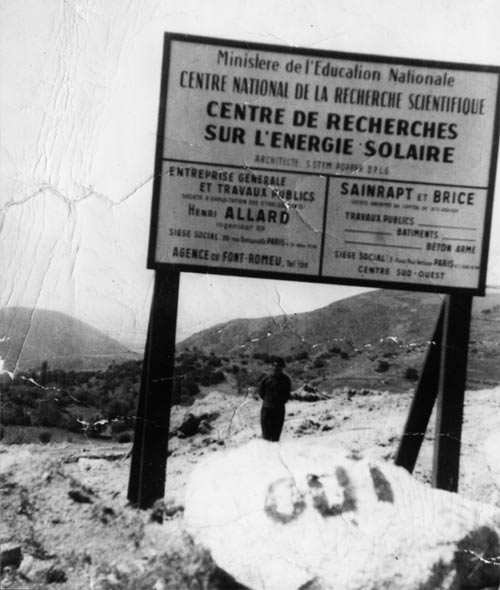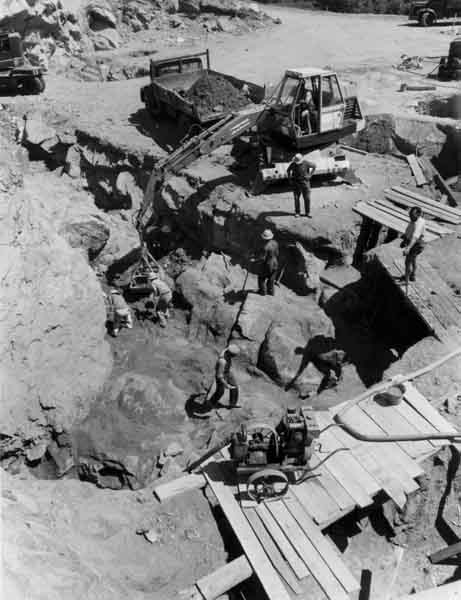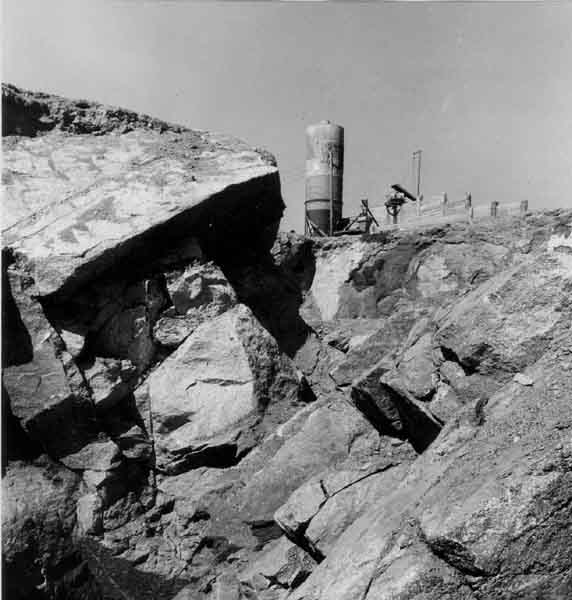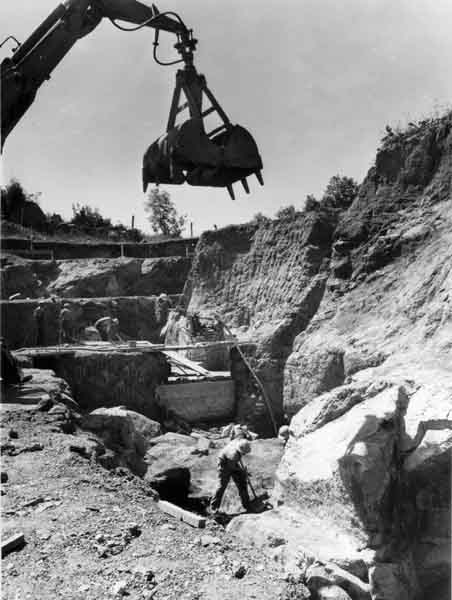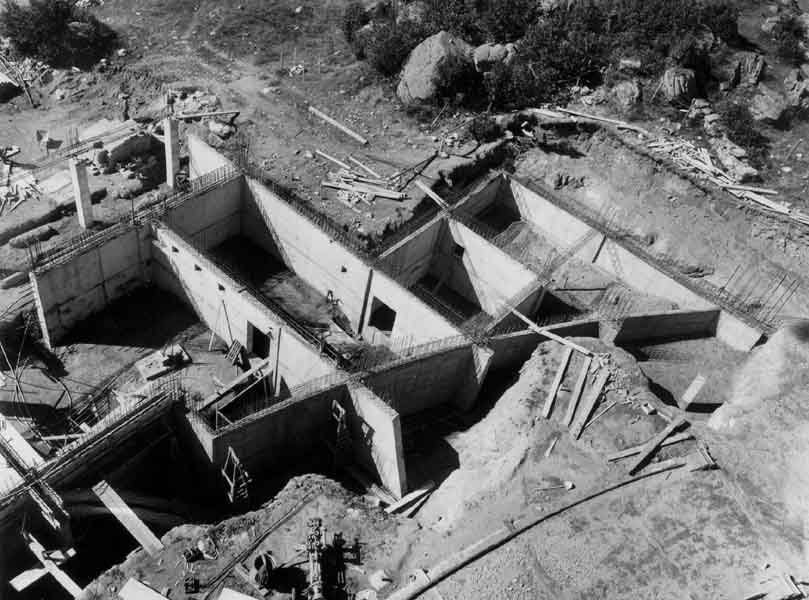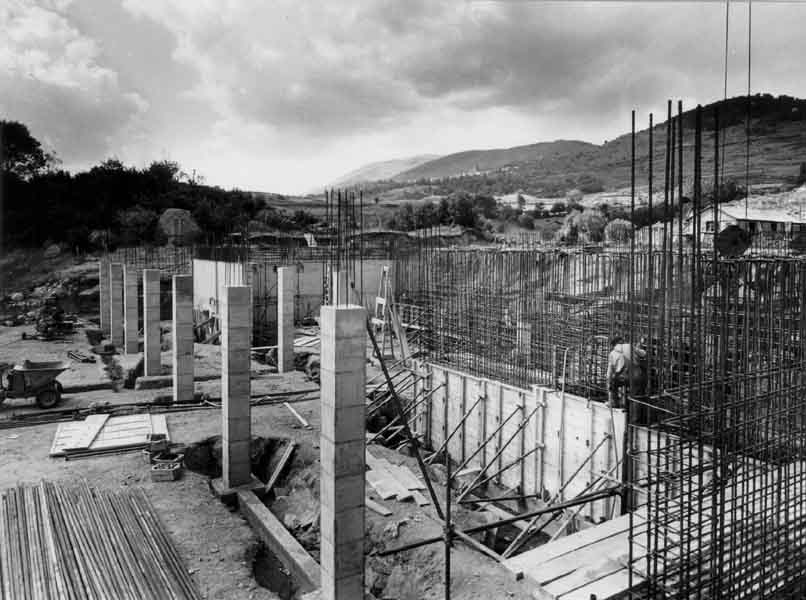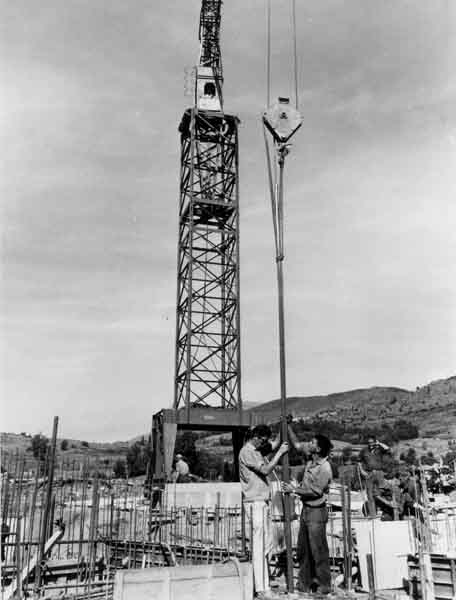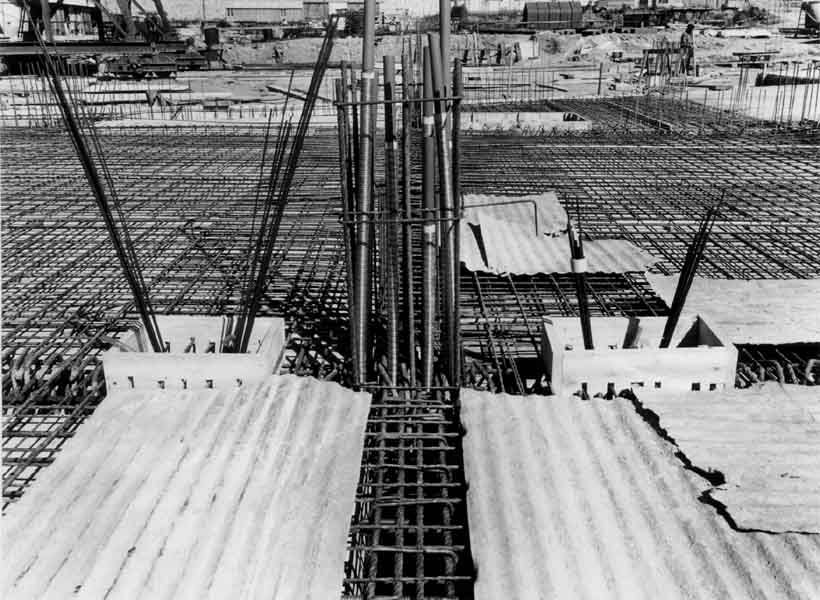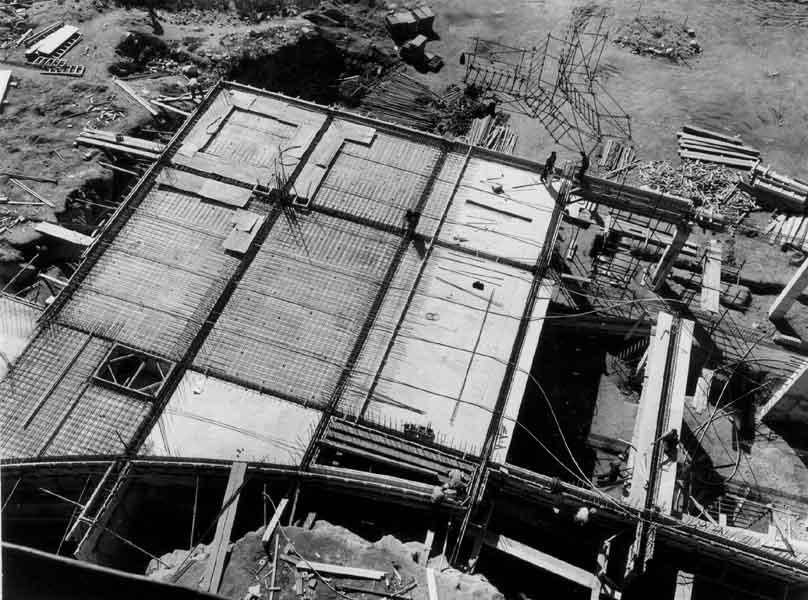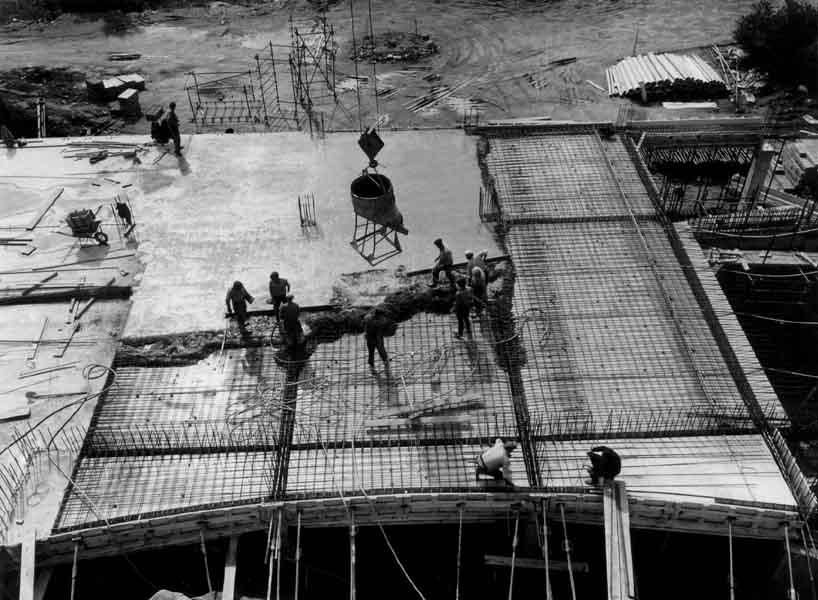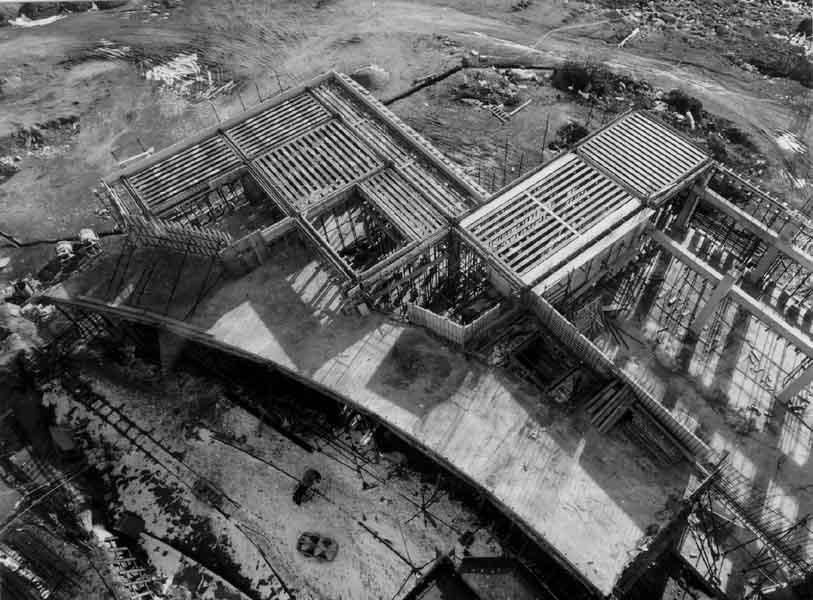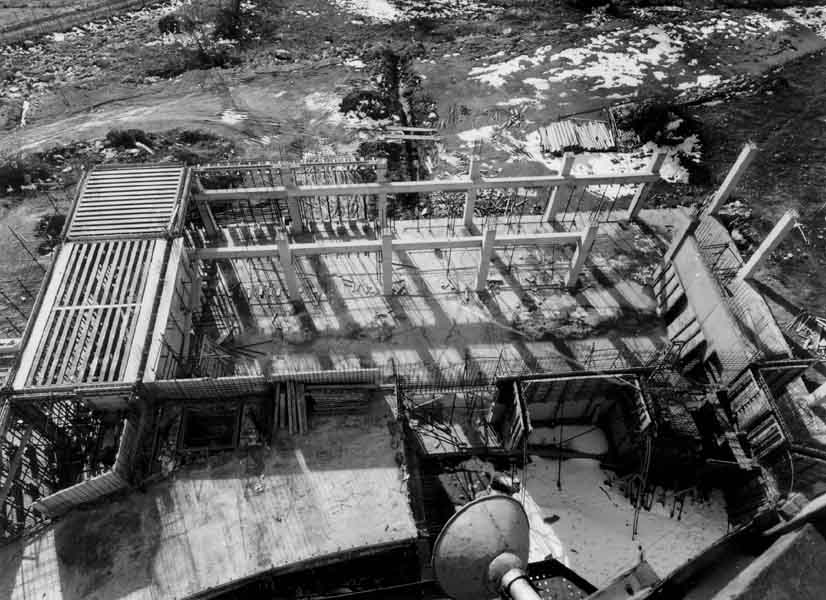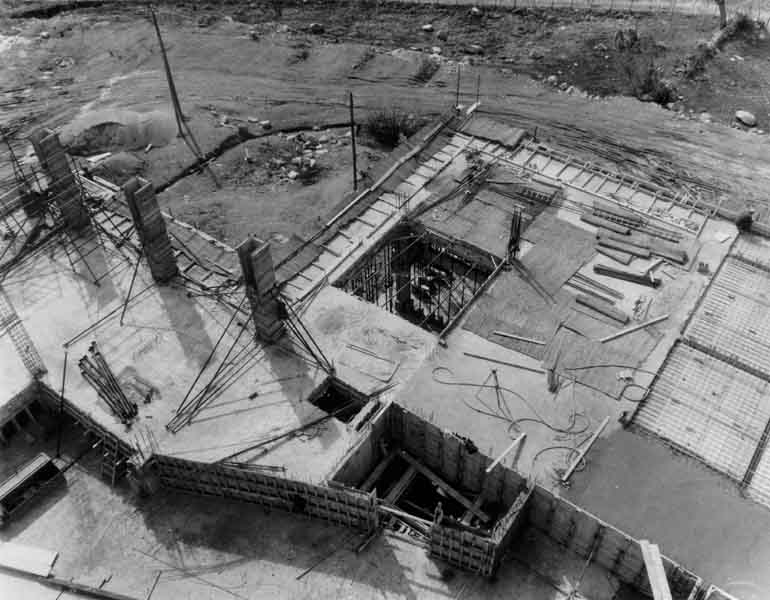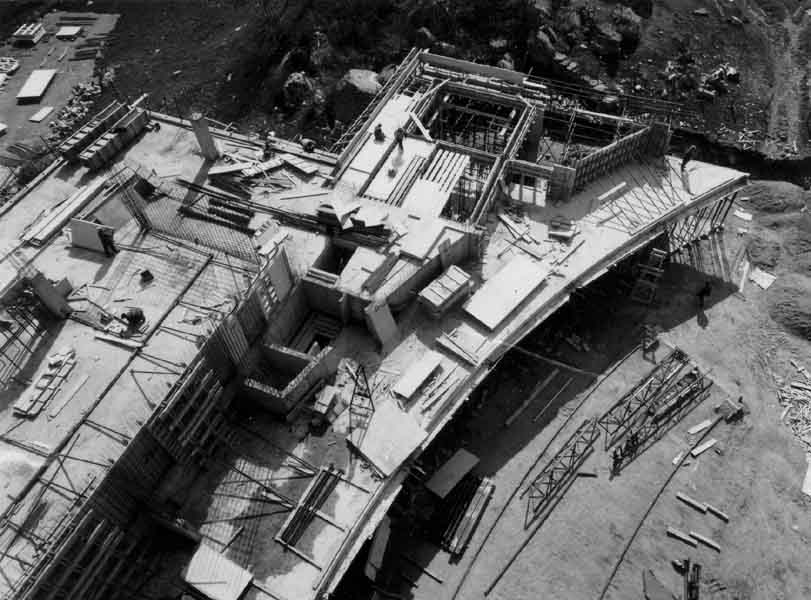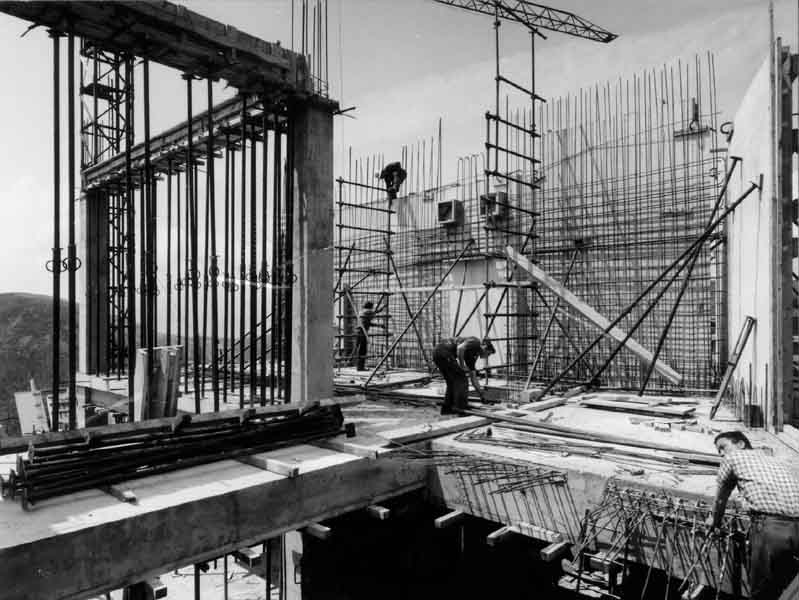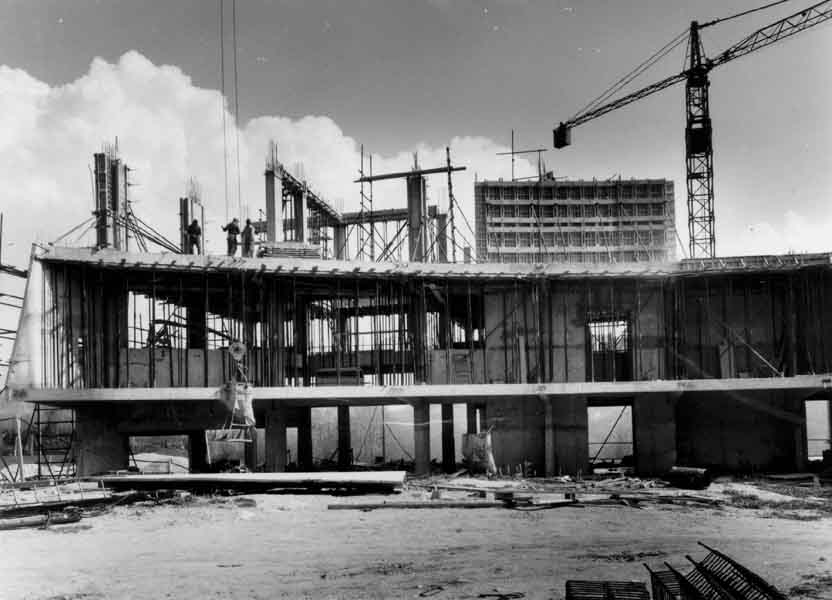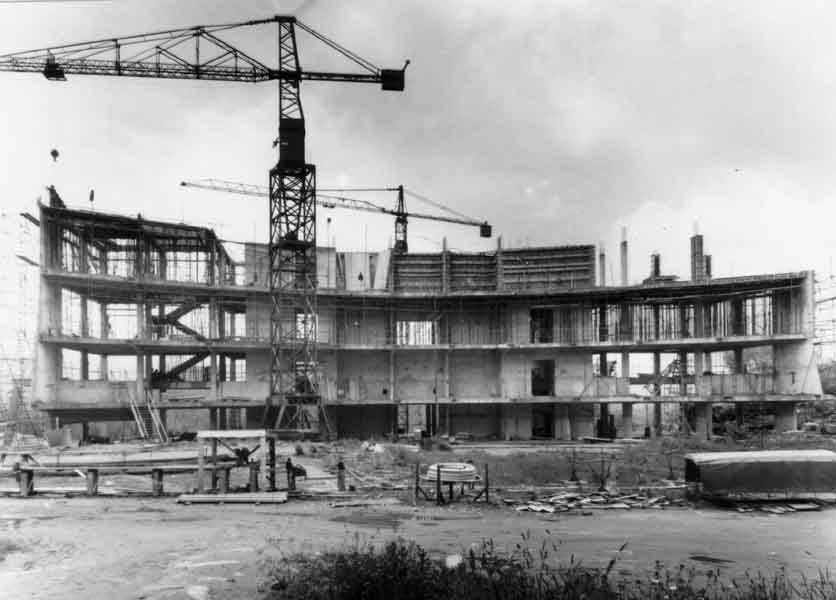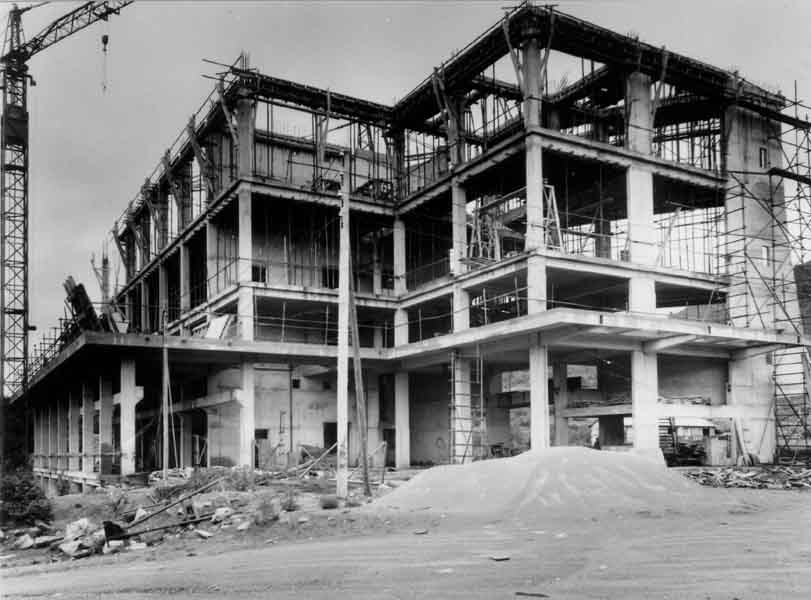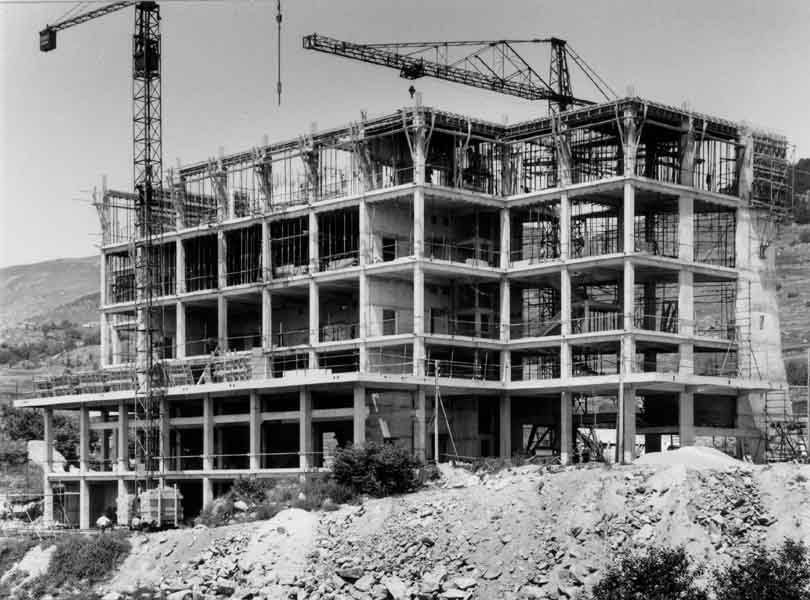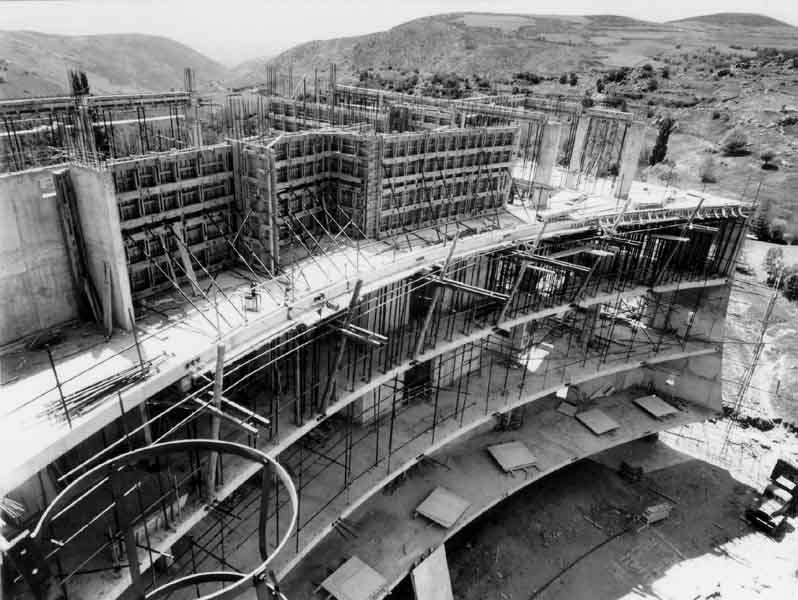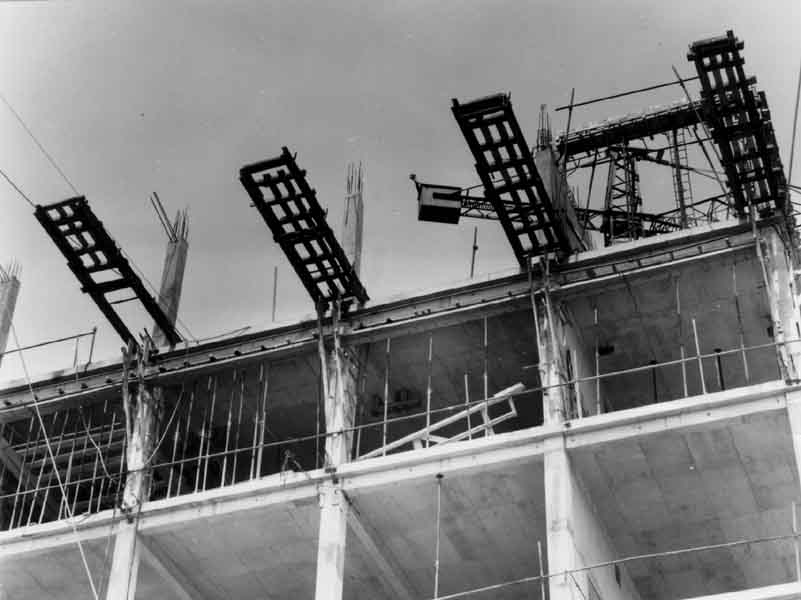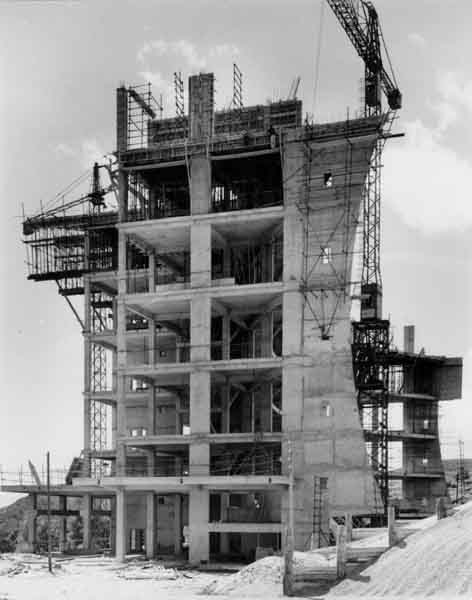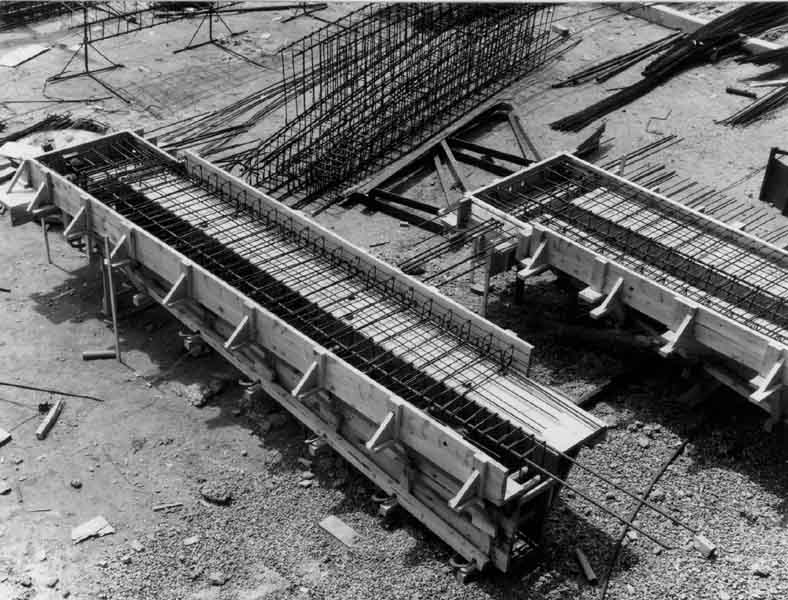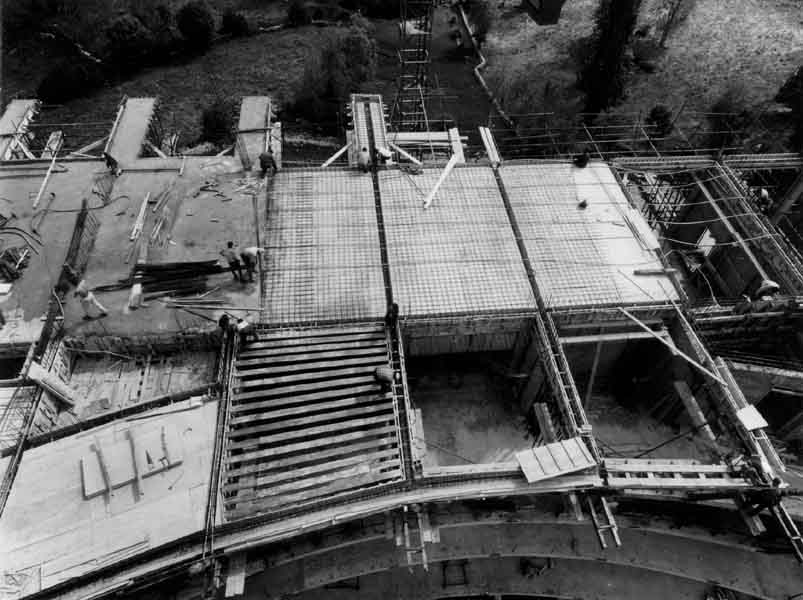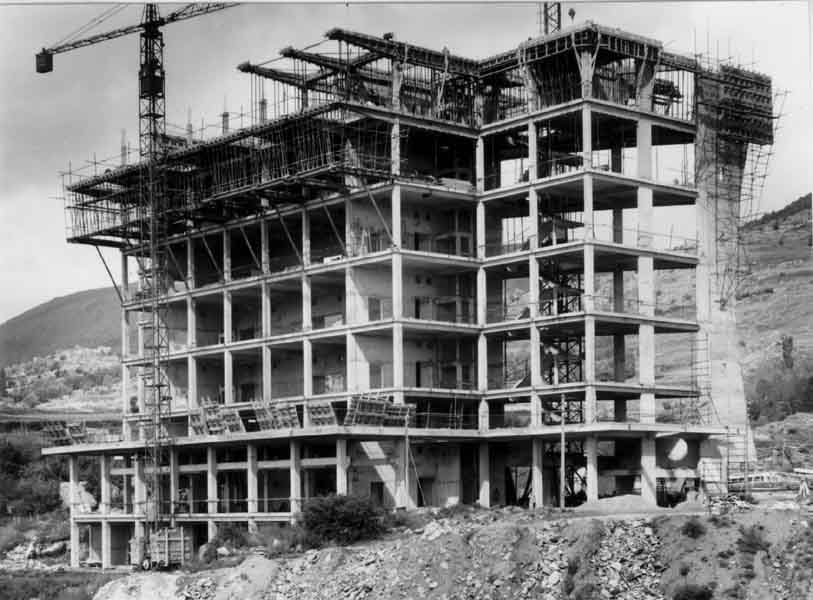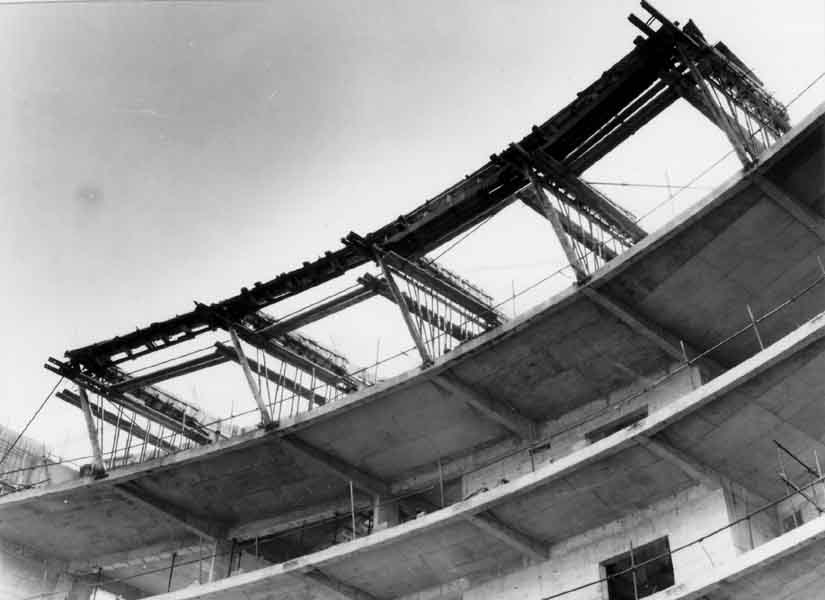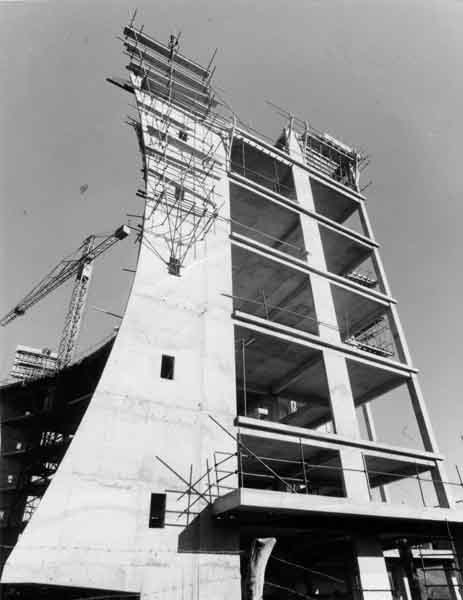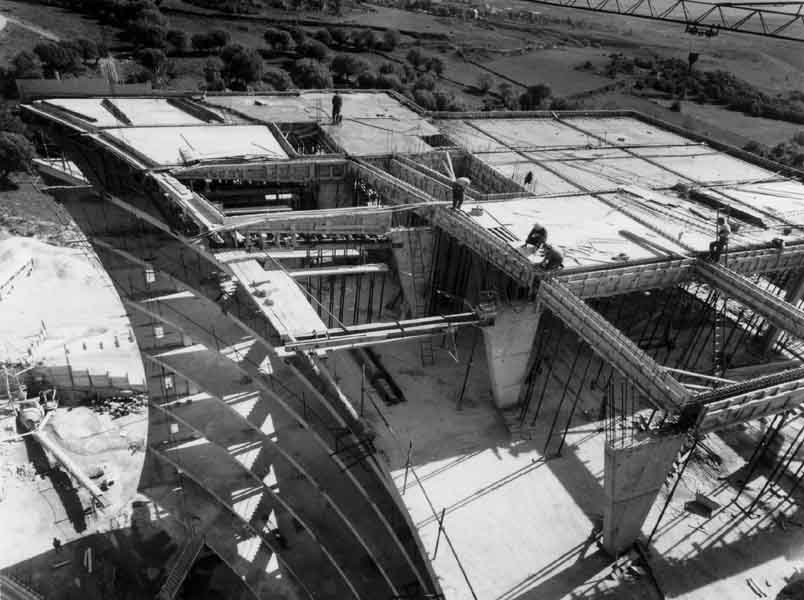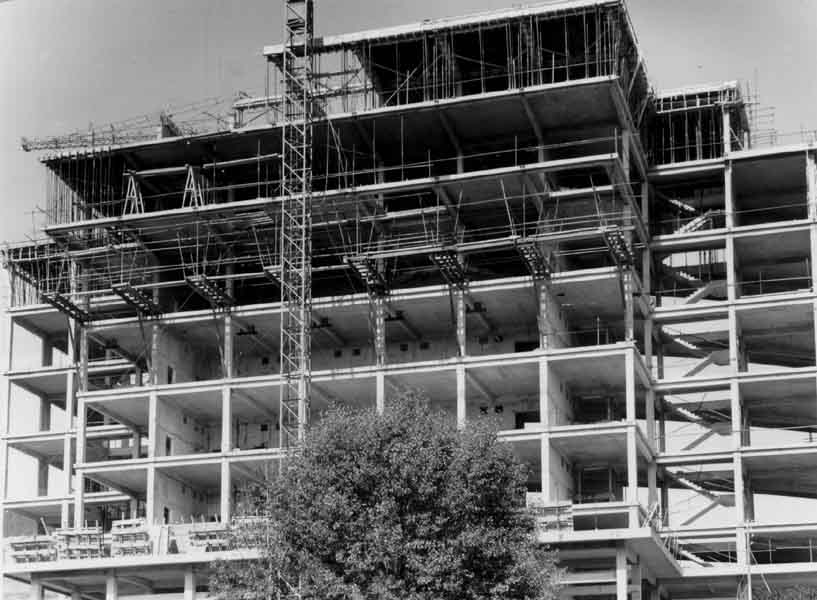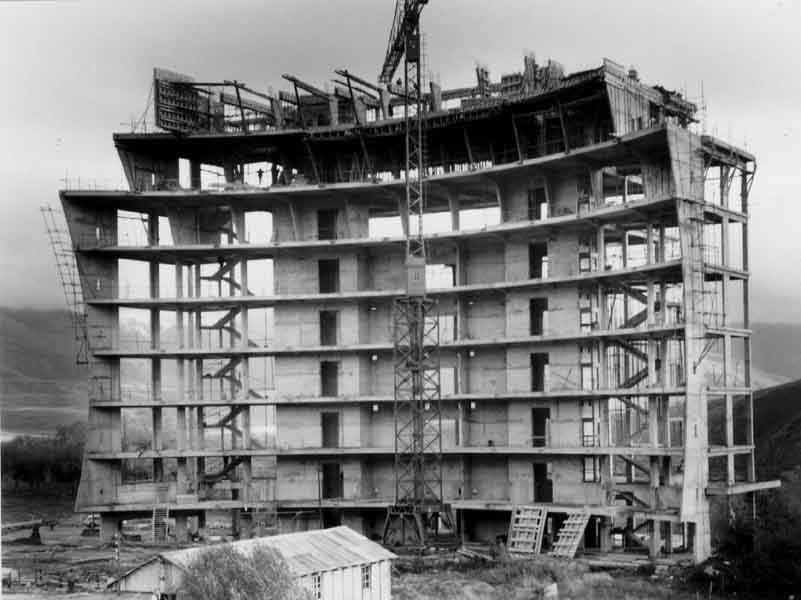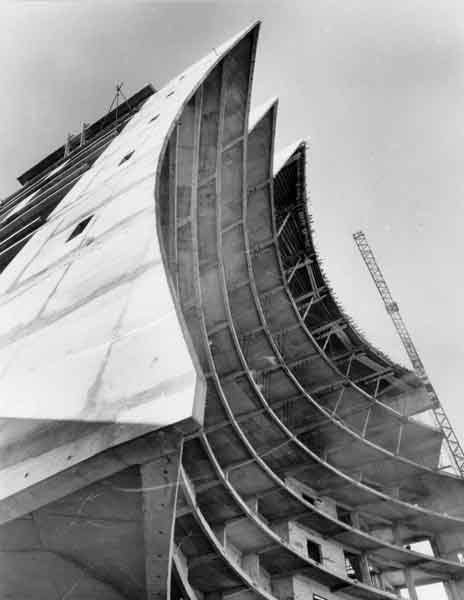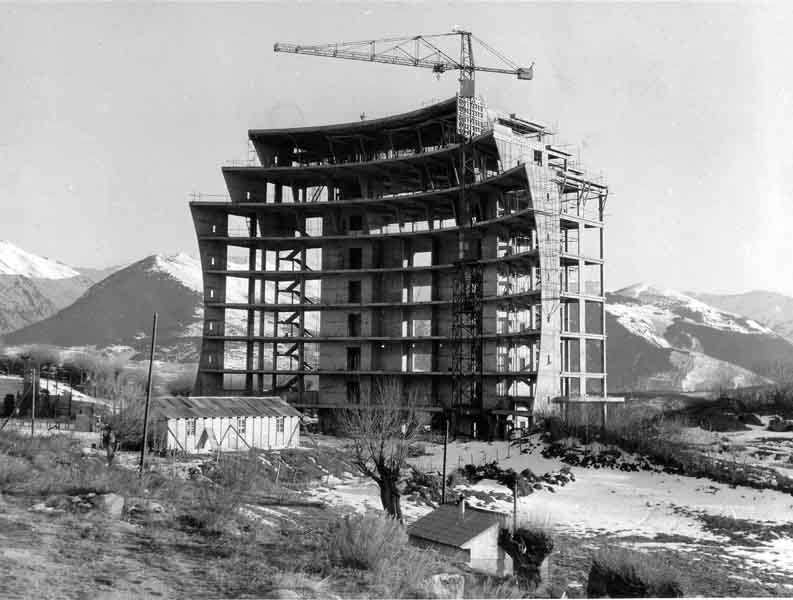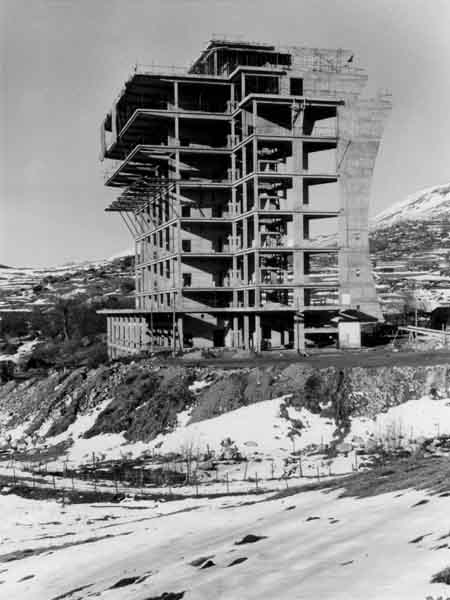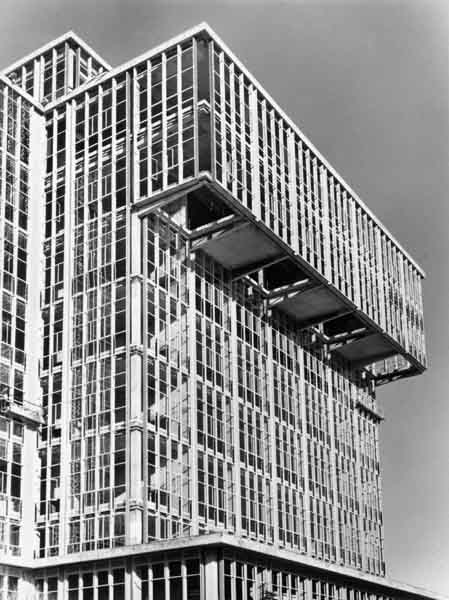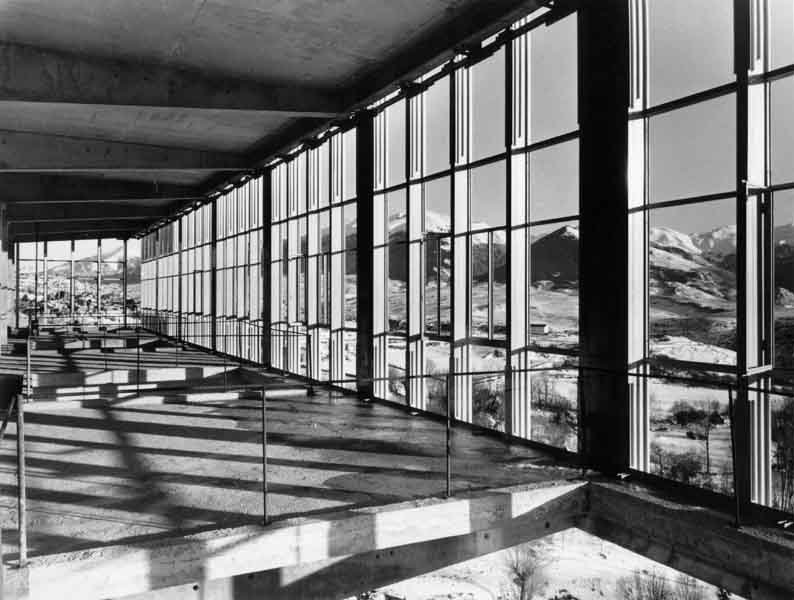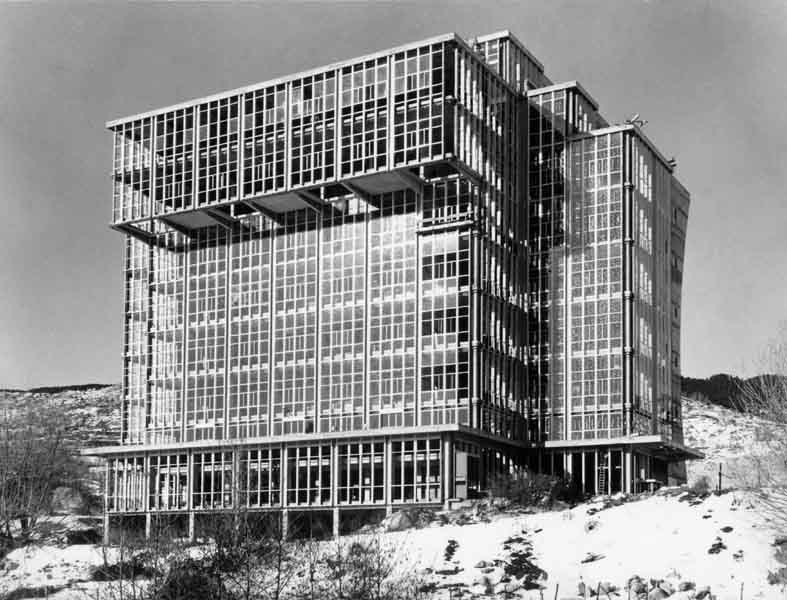The period of the origins, from 1946 to 1949
Félix Trombe realizes in Meudon, with Marc Foex and Charlotte Henry La Blanchetais, the first experimental program of obtaining high temperatures with the help of concentration of solar radiation, thus reviving the work of Lavoisier in the 18th century. This first “solar heating station” of 2 kW uses a parabolic concentrator of anti-aircraft projector in polar mount.
A new tool was born for chemistry and metallurgy at high temperature. This step leads to the construction of the solar furnace of 50 kW of Mont-Louis at the initiative of F. Trombe and considered by himself as the model of a future industrial solar furnace.
This device will serve as a model for the construction and use of many solar cookers in the world.
1968, the beginning
The CNRS laboratories move from Mont Louis to the solar furnace building in Odeillo. A period of adjustment and qualification of the installations begins.
The period from 1971 to 1984, the growth
A first phase from 1971 to 1976 corresponds simultaneously to a phase of increasing use of the 1000 kW solar furnace of the CNRS in Odeillo in the field of high temperature materials testing and to a pivotal phase. The first oil crisis of 1973 led to the restart of the solar industry in the USA.
The consequence of these orientations is the switch of Odeillo’s activities to solar boiler testing programs in the context of solar tower power plant projects.
Indeed, the Odeillo heliostat field was the only one in the world at that time. A second phase between 1976 and 1984 was associated with original developments: the applications of high temperatures obtained by concentrating solar radiation to the production of energy carriers such as hydrogen or metals. In addition, research on the storage of energy by chemical means was initiated.
The period from 1984 to 2003, the return to the roots
At the end of this second wave of solar energy and until 2003, in general, all the solar furnaces, old and new, have become again high temperature tools in the field of materials, that is to say have found their original vocation: very few of them are devoted to work on “solar chemistry” (process heat and energy carriers or chemical storage of energy). (Claude Royère “L’énergie solaire en France” editions of the Committee of historical and scientific works). In particular, the use of solar furnaces to test and improve materials for space applications was developing at this time. The laboratories are unified in 1986 under the leadership of C. Dupuy under the name of Institute of Science and Engineering of Materials and Processes (IMP), the IMP integrates teams from the University of Perpignan.
Since 2003, the renaissance and major projects
Environmental constraints (global warming, Kyoto protocol) and energy constraints (increase in oil prices) have led the CNRS and some industrialists to take a renewed interest in the conversion of high-temperature solar energy into energy carriers such as electricity and hydrogen. New research programs have therefore been initiated. In 2004, “solar energy” found its place in the new title of the laboratory (PROMES), under the direction of Gilles Flamant. The same year the European Alliance SOLLAB is created and the European project SOLFACE to host scientists from all over Europe on the site of Font-Romeu is set up. In 2006, the renovation of the field of heliostats Themis is launched in partnership with the General Council of the Pyrenees Orientales and major French industries. In 2009, the European project SFERA (program “Capacities”) is initiated and continues since (SFERA III). In 2011, the Equipex SOCRATE (SOlaire Concentré, Recherches Avancées et Technologies Energétiques) and the Labex SOLSTICE (SOLaire, Sciences, Technologies, Innovations pour la Conversion d’Energie) are selected by the CGI. The Labex SOLSTICE is renewed for the period 2020-2024.
These different projects have a significant impact on :
- The improvement of the performance and flexibility of the concentrated solar power plants operated by PROMES;
- The international opening of the laboratory: hosting foreign researchers, European and international projects;
- The development of upstream research and applications in the field of new generation solar power plants (improved efficiency, cost reduction -in particular storage-, grid integration), renewable fuels (hydrogen, synthetic gas) and innovative materials.
The solar facilities developed by PROMES are implemented in many European projects coordinated by the Laboratory: SOLHYCARB, CSP2, SOLPART, Next-CSP and POLYPHEM.

